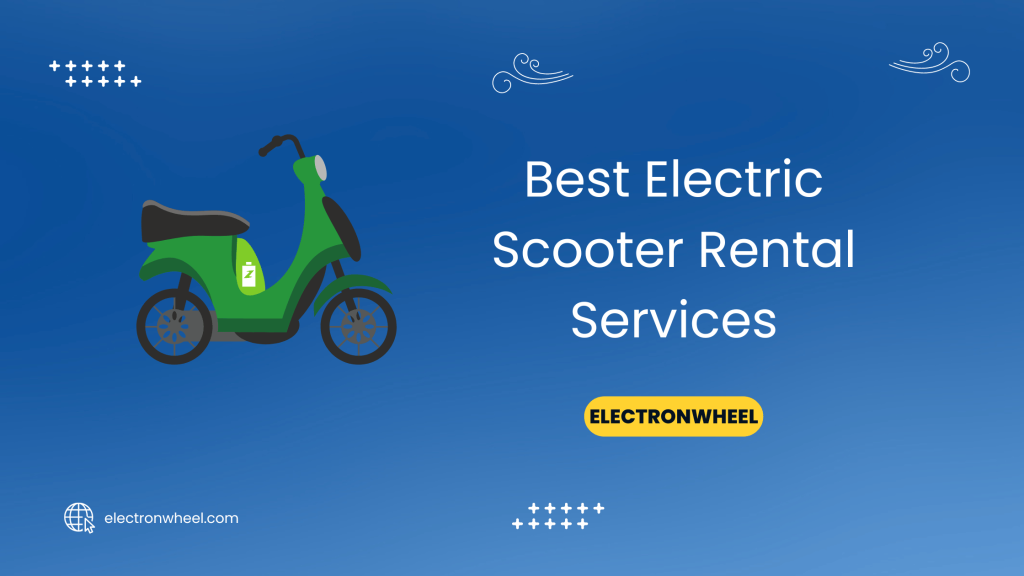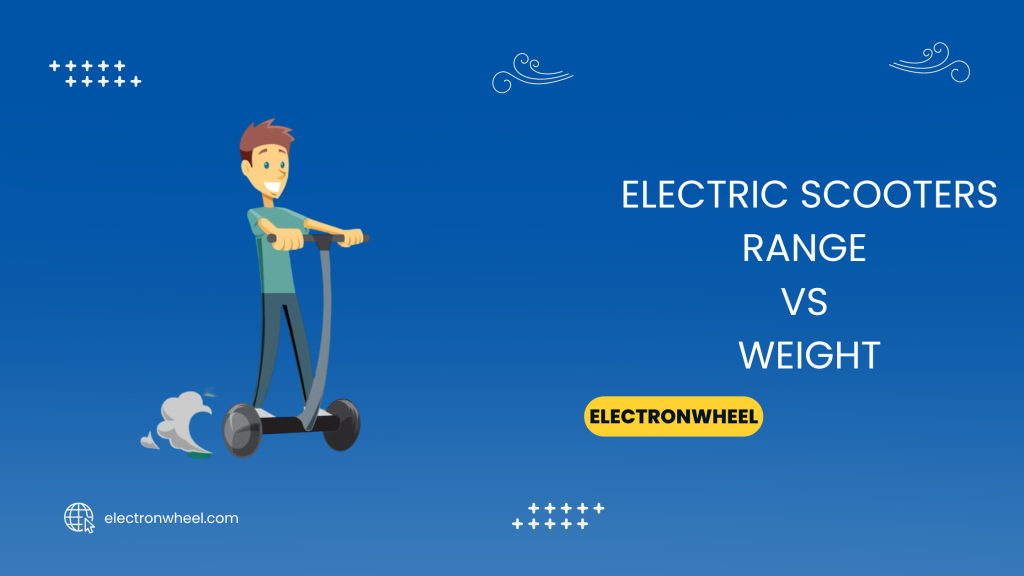This post contains affiliate links, we'll earn compensation if you make a purchase using them at no additional cost to you 😊
Micromobility is slowly taking over the world, and electric scooters vs electric bikes are the main reasons for it. These eco-friendly vehicles are the best alternatives for short commutes and trips.
Both EVs run on electric motors powered by rechargeable batteries, allowing riders to travel short distances without needing gasoline. Despite sharing some similarities, both electric vehicles have some differences that suit different needs.
In this article, I will compare e-scooters vs e-bikes side-by-side using various factors like speed, range, safety, comfort, price, and more.
By the end of the article, you will better understand the key differences between electric scooters and e-bikes. It will help you determine which option works best for your needs and preferences.
So, let’s get started.
Electric Scooter vs. Electric Bike: 2025 Showdown (In a Nutshell)
Here’s a quick comparison of electric scooters and electric bikes’ features.
| Features | Electric Scooter | Electric Bike |
| Speed | 15 to 50 mph | 20 to 85 mph |
| Average Weight | 30-42 lbs | 55 lbs |
| Safety | Adequate, lower stability | More stable |
| Comfortability | Small wheels, less suspension | Better suspension, larger wheels |
| Range | 15 to 40 miles | 35 to 90 miles |
| Portability | Foldable, easy to carry | Bulky and heavy |
| Terrains | Depends on the product | All terrains |
| Maintenance | Low | Moderate to high |
| Price | $300 to $1999 | $999 to $6000 |
All About Electric Scooters: Your Compact Ride Guide
An electric scooter is a vehicle with two wheels run by an electric motor using a rechargeable battery pack. The rider stands on the platform between two inline wheels and controls speed using the throttle on the handlebar.

You can find several types of electric scooters, including-
- Kick Scooters: These basic scooters require pushing with your foot to get started before the electric motor engages.
- Self-balancing Scooters: These types of scooters are also known as hoverboards. They use gyroscopes and motors in the wheels to self-balance.
- Moped-style Scooters: These types of scooters have a seat and are more balanced & comfortable.
Electric Scooters: Ride or Pass? – Top Pros And Cons
Pros
- Convenient for short trips and commute
- Easy to operate
- Compact size for portability
- Affordable
Cons
- Smaller wheels lead to less stability
- Not suitable for long distances
Bonus: Learn how to ride an electric scooter with our in-depth guide and tips!
E-Bikes Explained: Your Guide to Electric Bicycles in 2025
An electric bike, or e-bike, is a standard bicycle framed with an electric motor, drivetrain, and battery. The rider also uses a throttle on the handlebar to generate speed and acceleration. Unlike electric scooters, riders can sit comfortably and ride along rough terrains with ease.

There are several types of electric bikes available in the market:
- Pedelecs Bike: This type of bike features a small electric motor to assist in pedaling up to 20 mph.
- Throttle-assist Bike: The Rider uses a throttle instead of a pedal to accelerate and run this kind of bike.
- Mid-drive Motor Bike: This bike has motors installed in the middle of the bike, providing improved traction.
- Fat Tire Bike: As the name says, these bikes have oversized tires that are best for mountains and hills.
E-Bike Pros & Cons: Is It Right for You?
Pros
- Faster speed
- Longer Range
- Stable and comfortable
- Can tackle more terrains like mountains
Cons
- Heavier and bulkier
- More expensive
Electric Scooter vs. E-Bike: Choosing Your Perfect Ride (Key Differences)
Let’s break down and compare the key features of an electric scooter and an electric bike so you better understand which suits your lifestyle and different needs.
1. Riding Style
Electric scooters are designed to be stood on, while e-bikes are made to sat on and pedaled (or use throttle). Scooters have a narrower standing platform and control deck, while bikes have saddles and pedals.
Riding an electric scooter requires balance and steering skills like a skateboard or hoverboard, whereas riding a bike uses the core and leg muscles.
2. Sizes
The average electric scooter is around 50 lbs and folds down into a compact size for carrying and storage. Electric bikes are bigger in size and heavier. The average weight of an electric bike is around 50-55 lbs, depending on its frame and battery.
Electric scooters can be folded and fit easily in car trunks, public transit, and small spaces. Most e-bikes are not foldable, so they may require more floor space or bike racks for transport.
Tip: Learn the weight of the electric scooter in detail with our guide!
3. Comfort and Convenience Level
E-bikes are designed to provide ultimate comfort with their wider seats, suspensions, and pedal positioning. On the other hand, e-scooters can be exhausting when standing for a longer ride.
However, scooters require no physical exertion compared to e-bikes, which require pedaling as input from the rider. It makes scooters the ultimate choice for effortless and leisure rides.
4. Top Speed
Generally, electric scooters have an average speed of around 15-25 mph, while e-bikes can reach 20-30 mph without pedaling or faster pedal assist.
| Feature | Electric Scooter (Typical) | Electric Bike (Typical) |
|---|---|---|
| Top Speed | 15-25 mph (24-40 km/h) | 20-28 mph (32-45 km/h) |
| Regulation Variations | Yes, speed limits vary by region. | Yes, speed limits vary by region and classification (e-bike vs. moped). |
The lower center of gravity for scooters limits their speed capabilities compared to larger-framed e-bikes designed for stability at higher speeds.
Learn more about electric scooter’s speed with the complete guide here.
5. Maximum Range in Single Charge
Since electric scooters have smaller batteries, they can cover a range of 20-40 miles. E-bikes have larger batteries that allow longer range per charge, typically 40-128 miles. You can also find long-range electric scooters by checking the top brands’ catalogs.
On the plus side, scooters can fully recharge in just a few hours, while e-bike charging can take more time to charge fully.
| Feature | Electric Scooter (Typical) | Electric Bike (Typical) |
|---|---|---|
| Maximum Range (Single Charge) | 20-40 miles (32-64 km) | 40-80 miles (64-128 km) |
| Factors Affecting Range | Battery capacity, rider weight, terrain, riding style, weather conditions | Same as scooter, plus level of pedal assist used |
6. Safety
With smaller wheels and less stability, scooters have a higher risk of accidents. E-bikes offer more control with powerful hand brakes and stability at higher speeds.
E-scooters rely more on body steering than hand brakes. That’s why e-scooter riders are highly recommended to be equipped with proper gear.
7. Maintenance
E-scooters have fewer mechanical parts, so they don’t require very high maintenance. On the other hand, e-bikes require regular tune-ups since they have more mechanical parts and electric components. Both electric bikes and scooters need proper maintenance over time if you want them to be used for a longer time.
8. Price
Basic electric scooters can cost up to $300-$500, while high-end scooters can reach a price range of $2000. E-bikes cost much more than e-scooters as they offer more features. Typically, their costs start from $1000, while high-end bikes can cost up to $5000 or more.
9. Storage Capacity
Bikes excel in terms of storage capacity, with options for attaching baskets, saddlebags, and other accessories. Scooters, limited to stem-mounted bags or backpacks, offer comparatively less hauling capability.
10. Fun Factor
Electric scooters often provide a more exhilarating riding experience, characterized by agility and maneuverability. While electric bikes offer enjoyable rides, scooters tend to deliver a higher level of excitement.
Electric Scooter vs Electric Bike: Who Should Use It?
Based on their distinct features, electric scooters and e-bikes each cater to different needs:
- Electric scooters may be better for shorter, faster trips under 10 miles in urban areas for younger riders. Their portability also makes them ideal for multi-modal commuters.
- E-bikes offer greater comfort and stability for longer commutes over 10 miles, riding in varied terrain, and by older riders. The pedal assist also provides health benefits.
- Electric scooters can meet basic transportation needs at a lower price point for those on tight budgets. E-bikes are a significant investment, but offer upgraded performance and versatility.
- Electric scooters are more convenient for college students needing to get to classes on campus quickly, with minimal storage space required.
- Riders with hilly commutes or wanting to ride trails will benefit more from the torque and power of electric bikes.
Factors to Consider Before Choosing an Electric Scooter or Electric Bike
Before selecting an EV for your daily rides, you may want to consider a few things in mind:
- Budget: Electric scooters start at $300, while e-bikes start at $1000. Assess how much you can spend.
- Commuting Distance: Shorter rides are better suited for electric scooters, while longer commutes benefit from e-bikes.
- Terrain and Conditions: E-bikes can better handle hills, varied terrain, and adverse weather. Electric scooters work best on flat, dry surfaces.
- Storage Space: When folded up, electric scooters need little storage space, making them ideal for small homes and apartments.
- Comfort: E-bikes offer a more comfortable ride for longer distances with their suspensions, seats, and functional design.
- Physical Ability: Riders with injuries or limited mobility may benefit from e-bike pedal assist and seating versus standing on scooters.
- Safety: E-bikes offer more stability and braking control. Scooters require good balance and handling skills.
- Maintenance: E-bikes require more maintenance, while scooters have few mechanical parts needing service.
- Legal Regulations: Know whether e-scooters or e-bikes have restrictions on where you can ride them.
If you are looking to purchase an e-scooter, check out our comprehensive electric scooter buying guide that will help you choose the best.
Related Reads
Final Verdict: Both Winners in Their Own Right
In the electric scooter vs e-bike debate, no unanimous winner is declaring one option universally better. But if you ask my opinion, electric bikes are way better in many terms. Regarding comfort, speed, range, or tackling rough terrain, e-bikes can easily be the right choice for riders.
However, electric scooters provide an accessible, lightweight option for basic transportation and commuting shorter distances. Their smaller size and portability make them very convenient as well. However, they lack the speed, range, terrain handling, and comfort offered by e-bikes.
E-bikes are better equipped for longer rides thanks to increased battery capacity, pedal assist, and stability features. They can travel further and faster while accommodating more types of terrain. However, e-bikes can be heavy and bulky and require more maintenance.
I hope this guide assists you in making an informed decision. Feel free to share your preferences or questions in the comments below. Happy riding! 🛴🚲
FAQs
Most states do not require a license or registration to ride electric scooters or e-bikes. However, some states may require a driver’s license for e-bikes capable of higher speeds. Check your local laws.
Electric scooters typically reach 15-25 mph, while most e-bikes max out at 20-30 mph without pedaling. Some high-performance models can exceed 30 mph.
Electric scooters average 10-40 miles per charge. E-bikes offer 40-100+ mile ranges depending on model, terrain, and assist level.
Most can handle light rain but should be avoided in heavy rain or puddles, which can damage electrical components.
Average weight limits range between 220-260 lbs for electric scooters and 250-300 lbs for e-bikes. Check manufacturer specs.


